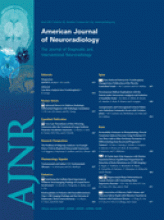Last February, I was asked to testify in front of the California Technology Assessment Forum (CTAF), a public service forum composed of numerous California physicians and health experts who assess new and emerging medical technology, on behalf of DePuy Spine regarding vertebroplasty as a treatment for osteoporotic compression fractures. The review was prompted by the publication of 2 randomized controlled trials in the New England Journal of Medicine (NEJM),1,2 which questioned the efficacy of vertebroplasty. Blue Shield of California Foundation spearheads the CTAF, managing the technology assessment reviews and organizing all CTAF meetings and events.
Because my flight was delayed by the thick slow-rolling fog, which blankets San Francisco during that time of year, I was able to arrive just a few moments before the start of the session. I was on a panel of 5 physicians, each of whom was given 5 minutes to talk. Dr Leah Karliner, Assistant Professor of Medicine at the University of California, San Francisco, opened the talks by discussing that on the basis of the NEJM articles, vertebroplasty does not meet the CTAF criteria 3–5 for safety, effectiveness, and improvement in health outcomes for the treatment of osteoporotic vertebral compression fractures. These criteria are namely the following: 1) the technology must improve the net health outcome, 2) the technology must be as beneficial as any established alternatives, and 3) the improvement must be attainable outside the investigational settings.
Most interesting, the same author and forum had concluded last year that kyphoplasty meets criteria 3–5 on the basis of the Fracture Reduction Evaluation (FREE) trial.3 Kyphoplasty is at least 3 times more expensive than vertebroplasty, and to our knowledge, as yet no report has provided evidence for better clinical outcomes with kyphoplasty compared with vertebroplasty. The forum also ignored the fact that the 2 NEJM articles in question represented a subgroup of patients who were presented as outpatients, even though the Medicare data suggest that approximately 40% of vertebroplasty procedures are performed for inpatients who are admitted to the hospitals due to pain resulting from compression fractures (AMA resource-based relative value scale data manager 2009).
The US Food and Drug Administration notes that for clinical trials that show small effect sizes “it [is] informative to examine the cumulative distribution function (CDF) of responses between treatment groups to characterize the treatment effect.”4 In this light, responder analysis should be considered as a means to evaluate disparities in measures of pain in the NEJM randomized controlled trials. Although both NEJM studies conducted a responder analysis, neither was powered to detect differences by using this approach. Kallmes et al2 considered patients to have experienced clinically meaningful pain relief if a decrease in pain of >30% was observed at 1 month. In this study, there was a trend toward a higher rate of clinically meaningful improvement in pain in the vertebroplasty group (64% versus 48%, P = .06) or a relative risk (RR) of 1.33 (95% confidence interval [CI], 0.97–1.82). Buchbinder et al1 measured patient response by using a 7-point ordinal scale, ranging from “a great deal worse” to “a great deal better.” At 1 month, 34% of patients having undergone vertebroplasty versus 24% of control patients classified their pain as “moderately better” or “a great deal better,” for an RR of 1.45 (95% CI, 0.7–3.01) of experiencing a clinically meaningful response. Although distinct response definitions were used, reductions in pain of ≥30% have previously been shown to reflect much improved pain, allowing pooling of these response data.
Indeed, a pooled analysis of responders from both studies (completed by DePuy Spine) addresses inadequate power in each individual study and reveals that subjects in the vertebroplasty groups were 35% more likely than control subjects to experience clinically meaningful reductions in pain at 1 month (P = .04).5 Meta-analysis, by using the DerSimonian Laird random effects model, indicates that subjects with vertebroplasty had a pooled RR of 1.35 (95% CI, 1.01–1.80) versus controls for experiencing a clinically meaningful reduction in pain (P = .04).
These results illustrate that larger studies are required before rushing to a premature conclusion. Noridian Administrative Services, a Medicare intermediary for 11 Western states, has issued a draft of a local noncoverage decision for both percutaneous vertebroplasty and percutaneous vertebral augmentation, proposing to deny reimbursement for these procedures for all indications. On the international level, the Ontario Health Technology Advisory Committee in Ontario, Canada, is considering a similar position.
The Vertebroplasty versus Conservative Treatment in Acute Osteoporotic Vertebral Compression Fractures II trial was recently published, in August 2010.6 The study was a prospective randomized trial of vertebroplasty and conservative treatment for 202 patients. In this study, vertebroplasty resulted in greater pain relief than did conservative treatment; the difference in mean visual analog scale (VAS) score between baseline and 1 month was −5.2 (95% CI, −5.88 to −4.72) after vertebroplasty and −2.7 (95% CI, −3.22 to −1.98) after conservative treatment. Between baseline and 1 year, it was −5.7 (95% CI, −6.22 to −4.98) after vertebroplasty and −3.7 (95% CI, −4.35 to −3.05) after conservative treatment. The difference between groups in reduction of the mean VAS score from baseline was 2.6 (95% CI, 1.74–3.37; P < .0001) at 1 month and 2.0 (95% CI, 1.13–2.80, P < .0001) at 1 year. The study concluded that in a subgroup of patients with acute osteoporotic vertebral compression fractures and persistent pain, percutaneous vertebroplasty is both effective and safe. Pain relief after vertebroplasty is immediate, is sustained for at least 1 year, and significantly exceeds the relief achieved with conservative treatment, at an acceptable cost. Most interesting, although this study was every bit as well-implemented as the FREE trial,3 it received none of the media and insurance carrier attention given to the NEJM articles.
Footnotes
-
Disclaimer: No funding was received for this letter. However, DePuy Spine provided access to meta analysis results per author request.
References
- Copyright © American Society of Neuroradiology












